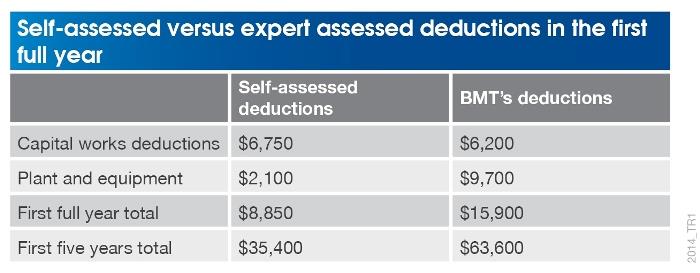Since the 1986-1987 financial year Australia has operated a system of self-assessment of income tax, under which taxpayers’ returns are accepted at face value in the first instance.
The Australian Tax Office (ATO) may subsequently verify the accuracy of the information in the return within a prescribed period of time after that initial assessment.
As a consequence, a significant proportion of Australians now submit self-assessed information when they lodge their tax returns each year. This includes property investors making self-assessed depreciation claims.
Although self-assessment makes it easier for individuals to lodge their tax returns, investors often lack the knowledge of complex tax legislation surrounding depreciation deductions. For this reason, a large percentage of investors miss out on thousands of unclaimed depreciation deductions each financial year. The risk of incorrect claims being made is also significantly higher, which can increase the risk of an audit being performed by the ATO.
Working with Accountants and Property Professionals, specialist Quantity Surveyors such as BMT Tax Depreciation aim to educate property investors to make sure they lodge the correct property depreciation claims at tax time. A recent comparison of self-assessed deductions compared to the deductions identified by a depreciation specialist for an investment property found the difference in claims made to be considerable.
Depreciation example
A client purchased a three bedroom house in an outer Sydney suburb for $610,000. The property was constructed in 2004.

Deductions are based on a full financial year of ownership. Depreciation deductions were calculated using the diminishing value method of depreciation.
In the first full year of ownership BMT Tax Depreciation was able to identify an extra $7,050 in depreciation deductions and an extra $28,200 in deductions in the first five years when compared with the owner’s self-assessed deductions.
The deductions found for the capital works (or the structural component of the property) were similar, however deductions for plant and equipment items (or removable and mechanical assets) were grossly underestimated or completely missed when the investor self-assessed.
When a Quantity Surveyor prepares a tax depreciation schedule they will perform a site inspection of the property to identify plant and equipment assets which may otherwise be considered capital works. This will increase the rate at which items within the property can be depreciated, making the most of available deductions.
No item is too small to consider including in a depreciation schedule. Low-cost assets and low-value assets all add up and help to maximise depreciation benefits. If an asset has a sufficiently low-value, legislation allows it to be written off much faster and sometimes the full depreciable value of these assets can be claimed immediately. A tax depreciation schedule will also substantiate any claim should the ATO perform an audit.
Property professionals can help by educating their investor clients and encouraging them to engage a specialist Quantity Surveyor for their depreciation needs. By doing so, they will play a role in helping their clients to potentially increase their cash returns.








You are not authorised to post comments.
Comments will undergo moderation before they get published.